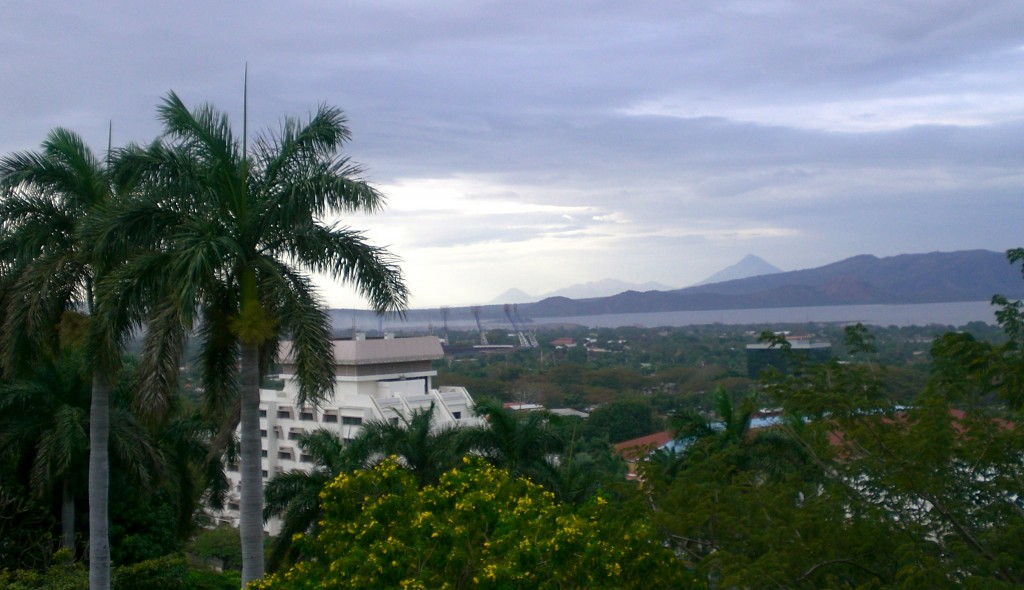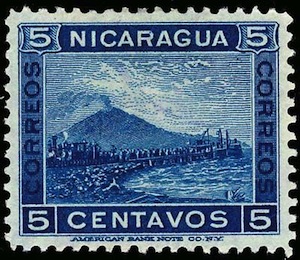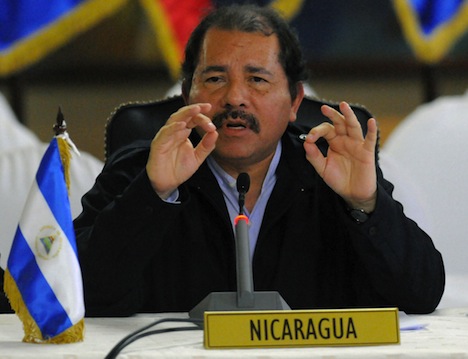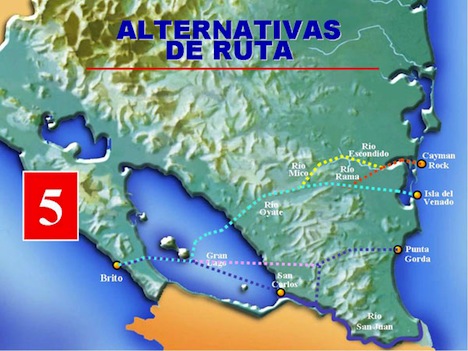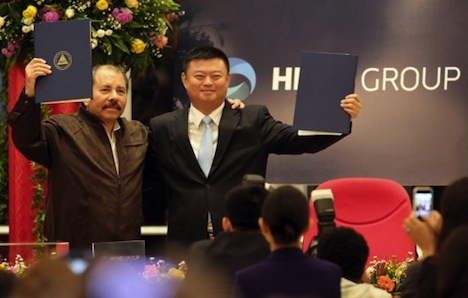Over the past month, Nicaragua has been working to push forward with a plan to build a canal linking the Pacific Ocean to the Caribbean Sea — a dream that predated the actual construction of the Panamá Canal in 1914.![]()
The original push in the United States for a canal through Central America started as the dream of U.S. senator John Tyler Morgan of Alabama, a former Confederate colonel during the U.S. civil war, who hoped that a canal through Nicaragua would restore the U.S. south to economic prominence, and he pushed throughout the 1880s for a Nicaraguan canal, in particular, long before Panamá, then itself the northernmost province of the Republic of Colombia, was a serious option, despite the fact that the engineer of the Suez Canal, Ferdinand de Lesseps, had failed in French-led efforts to build a canal through the isthmus of Panamá.
19th century Nicaraguan dreams turn to 20th century Panamanian realities
After the French disaster in Panamá — beset by corruption, disease and ultimately failure — Nicaragua seemed the clear favorite for U.S. interests in the construction of a Central American canal. The story of how Wilson Nelson Cromwell (who helped found the law firm Sullivan & Cromwell) and Philippe Bunau-Varilla transformed public opinion, first within the administration of former U.S. president William McKinley and, thereafter, Theodore Roosevelt, and then in the U.S. Congress, to favor a Panamanian route as speedier and less costly is one of the most amazing stories in the history of congressional lobbying. After all, Panamá already featured a French railway to facilitate construction, ports on either side of the isthmus, the remnants of the aborted French canal effort, and it would, after all, be much shorter than any Nicaraguan canal.
As debate in Congress ultimately turned into a battle of the routes, Bunau-Varilla and U.S. senator Mark Hanna, a top Republican powerbroker, had worked to convince skeptical colleagues that Nicaragua’s volcanic activity made it too unstable for a canal. Incredulously, Hanna delivered a speech on the Senate floor purporting to show all of Nicaragua’s supposed active volcanoes would make the route more difficult.
But the tour de force turned out to be a stamp — as Matthew Parker writes in Panama Fever: The Epic Story of One of the Greatest Human Achievements of All Time:
Over the next few days Bunau-Varilla scoured the philatelists of the capital looking for a certain 1900 one-centavo Nicaraguan stamp, which he had come across the year before. In the foreground of the stamp is pictured a busy wharf while in the background rises the magnificent bulk of Mount Momotombo. In an artistic flourish the illustrator had added smoke to the top of the volcano, which was actually more than a hundred miles from the proposed Nicaragua canal. Just before the vote, every senator was sent this ‘evidence’ of the dangers of the Nicaragua route.
Ultimately, the vote favored Panamá over Nicaragua by just eight votes. Roosevelt’s administration thereafter embarked on the self-interested cause of Panamanian independence from Colombia and, having helped deliver such independence in 1903, commenced building the Canal over the next decade, with U.S. doctors and engineers learning how to reduce yellow fever and malaria along the way through the reduction of mosquito populations. Though the United States controlled the Canal through much of the 20th century, U.S. president Jimmy Carter formally agreed in a 1977 treaty to cede control of the Panamá Canal Zone back to Panamá. Since that transition in 1999, Panamá has reaped much of the economic benefit of the Canal’s income, which has helped Panamá become one of Central America’s strongest economies, and the country is preparing for the completion of a project in 2014 to widen the Canal, thereby expanding Panamanian economic opportunities.
A Sandinista canal
Fast-forward nearly a century, and Nicaraguan president Daniel Ortega hopes to succeed where over a century’s worth of futile dreams have failed — that is, with a little help from the Chinese.
Ortega came to power for the first time in 1979 when his Sandinista revolutionaries overthrew U.S.-backed dictator Anastasio Somoza, the last of a line of three Somoza family members that had controlled Nicaragua since the mid-1930s. Somoza was no great loss for Nicaragua, but his overthrow came at a difficult time for the country, which was slowly recovering from an earthquake in 1975 that had essentially leveled Managua, the capital, hastening its long-term decline as the financial capital of Central America to the rising Panamá City. Ortega came to power as part of a Sandinista junta, and though he slowly emerged as Nicaragua’s top leader as president from 1985 to 1990, his rise to power led to one of the most brutal proxy fights of the Cold War, with Ortega and the Sandinistas turning to the Soviet Union for support and the United States clandestinely arming and supporting the ‘Contras,’ plunging the tiny Central American country into a decade-long civil war.
Ortega (pictured above) stepped down in 1990 after losing the presidential election, but as Nicaragua slowly recovered from the carnage of the 1980s, and as Nicaraguans suffered through a long line of democratically elected, if massively corrupt and mediocre presidents, Ortega retained a strong following, especially among the country’s poorest residents. He returned to power in 2006 after winning a highly fragmented election under the old Sandinista banner (FSLN, Frente Sandinista de Liberación Nacional), having remade himself as a democratic socialist along the lines of Venezuelan president Hugo Chávez. Ortega, who quickly consolidated the instruments of power, eliminated the hurdle of term limits and was overwhelmingly reelected in November 2011 under conditions that were tilted widely in favor of the Sandinistas.
But unlike in the 1980s, when Ortega seemed to be genuinely interested in eliminating corruption and establishing a new more just, socialist era for Nicaragua, Sandinista 2.0 has jettisoned the ideology for a state capitalist model that’s just as corrupt as the Somoza era ever was.
Nonetheless, with Panamanian GDP per capita approaching $15,000, Ortega hopes that Nicaragua can boost its economic growth through the development of a canal as well. Nicaragua’s GDP per capita of between $4,000 and $4,500 means that it vies with Honduras as the poorest country in Central America — even Guatemala and El Salvador have stronger economies, to say nothing of Costa Rica and Belize, top tourist destinations through the development of more robust legal institutions and more secure infrastructure. Though Nicaragua is full of breathtaking potential as a tourist destination, no one believes it is going to transition anytime soon into the same level of development that Costa Rica and Panamá both currently enjoy.
So pushing aside environmental concerns, to say nothing of more basic logistic concerns, Nicaragua’s Asamblea Nacional (National Assembly) overwhelmingly approved a measure two weeks ago to award a contract to begin developing an interoceanic canal through Nicaragua:
“One of Nicaragua’s great riches is its geographic position, that’s why this idea has always been around,” Sandinista government congressman Jacinto Suarez in Congress on Thursday. “Opposing it is unpatriotic,” he added.
It’s not yet clear, however, what the route of the proposed Nicaraguan Canal would even be — it would certainly go through Lake Nicaragua, and that could bring saltwater into the freshwater Lake Nicaragua, disrupting the ecosystems of one of the country’s most treasured natural settings. Two general routes have been mooted in the past, but both have their own problems. A southern route along San Juan River could cause boundary disputes with Costa Rica, and a more northern route would be disruptive for agricultural and other environmental concerns. Unlike the Panamá Canal, which requires a complex lock system, a Nicaraguan Canal could theoretically be built at sea level. But because Lake Nicaragua sits about 30 feet above sea level, the engineering would still be complicated.
The link to China
The cost of the project is already projected to be $40 billion, which is about $10 billion more than the combined economies of Nicaragua and neighboring Honduras.
The proposed canal has Ortega’s wholehearted support, and Nicaragua has now approved a 50-year concession to the enigmatic Hong Kong Nicaragua Canal Development Investment Company (HKND Group), which is owned by Chinese telecommunications magnate Wang Jing — even yesterday, he confirmed the investment project is no joke.
Pursuant to the terms of the concession, Nicaragua would obtain 51% ownership in the project only after 50 years, which has sparked some controversy within Nicaragua about sovereignty in a country that spent centuries as a Spanish colony and, thereafter, caught up as a pawn of U.S. geopolitical interests, even before the Cold War. In the 1850s, American ‘filibuster’ William Walker invaded Nicaragua and became its president briefly before a Central American army deposed and executed him. Only in the 1890s did the Nicaraguan government begin to exert control over the eastern part of the country which was claimed by Great Britain for much of the 19th century, and even today, Bluefields, on the Caribbean coast, has more in common with the Anglophone Caribbean islands than with the Spanish colonial background of the more established cities of Managua, Granada and Léon in the west of Nicaragua.
But the $40 billion question — or perhaps, let’s say, the ¥245 billion question — is just how seriously the Chinese government is taking the concept of an alternative canal to link the Pacific and Atlantic Oceans. Though there are rumors that Wang Jing (pictured with Ortega below) may be connected to the People’s Republic of China, the financing for the canal project isn’t coming from the Chinese government, so it will be entirely private financing, at least initially. But the Chinese government could also provide grants or other incentives to encourage private Chinese investment in the canal through HKND Group.
As Ishaan Tharoor and Tim Rogers reported in Time, however, the new company is based in Hong Kong and registered in the Cayman Islands, so it’s not immediately clear how much clout the company has, and it’s not clear that Managua and Beijing are on the best of terms:
But Nicaragua is an unlikely beachhead for Beijing’s expanding geopolitical clout. The Central American nation is among a handful of countries that maintains diplomatic ties with Taiwan, which Beijing still considers a renegade province. The Chinese company that was granted the generous concession, HK Nicaragua Canal Development Investment (HKND-Group) — an enigmatic firm that was recently registered in the Cayman Islands and supposedly based in Hong Kong — doesn’t appear to have any direct ties to the Chinese government, nor any international experience managing infrastructure projects. Nor are there any immediate signs of Nicaragua following what Costa Rica did in 2007 and breaking ties with Taiwan in favor of new benefactors from the Chinese mainland.
The company’s CEO, Wang Jing, is a Chinese telecom tycoon. On the website of his flagship cell-phone company Xinwei, Wang says his wireless company, which consequentially just received a full-service telecom concession to operate in Nicaragua, is dedicated to the “progress of the world civilization” and “will become a legend!” But other than his official bio, little is known about Wang. He has visited Nicaragua only once— a stiff, no-smiles photo op with President Ortega last September.
“Why Wang Jing? I really don’t know, but I would guess that no one else was willing to fund a project of this sort,” says Margaret Myers, director of the China and Latin America program at the Inter-American Dialogue. Myers says Wang is rumored to have government connections, but so far there is no indication that the Chinese government is interested in the project. “I haven’t seen the project referenced at all in Chinese official or social media,” she says.
After years of shopping the Nicaragua Canal project around, however, a private, Chinese maverick investor from Hong Kong may be the only person willing to make such a risky investment in a country where so many problems could arise, not least of which include the potential that Ortega or a future Nicaraguan leader would nationalize the canal to divert all of the profits to the state. Despite the global reach of capital, foreign investment in Nicaragua remains more in the ‘speculative’ stage than the ’emerging market’ stage.
On the other hand, it isn’t necessarily out of the question that the PRC’s leadership would find an alternative Chinese-owned shipping route between the two oceans appealing, so Nicaragua’s new mysterious investor could well be counting on the fact that if the project gets off to a strong start, it could pique official interest in the canal, especially given China’s growing economic and political relations throughout Latin America. If Nicaragua finds its way toward severing its official recognition of Taiwan, greater Sino-Nicaraguan cooperation on the canal project might even open the door to even greater Nicaraguan-Chinese economic ties. That alternative may be especially important these days for Ortega, given the precarious economic condition of Nicaragua’s recent benefactor Venezuela, upon which Ortega has grown increasingly dependent for aid in the past seven years.
Top photo credit to Kevin Lees — view of Managua from Parque Historica, February 2008. Bottom photo credit to Diana Ulloa/Confidencial.
